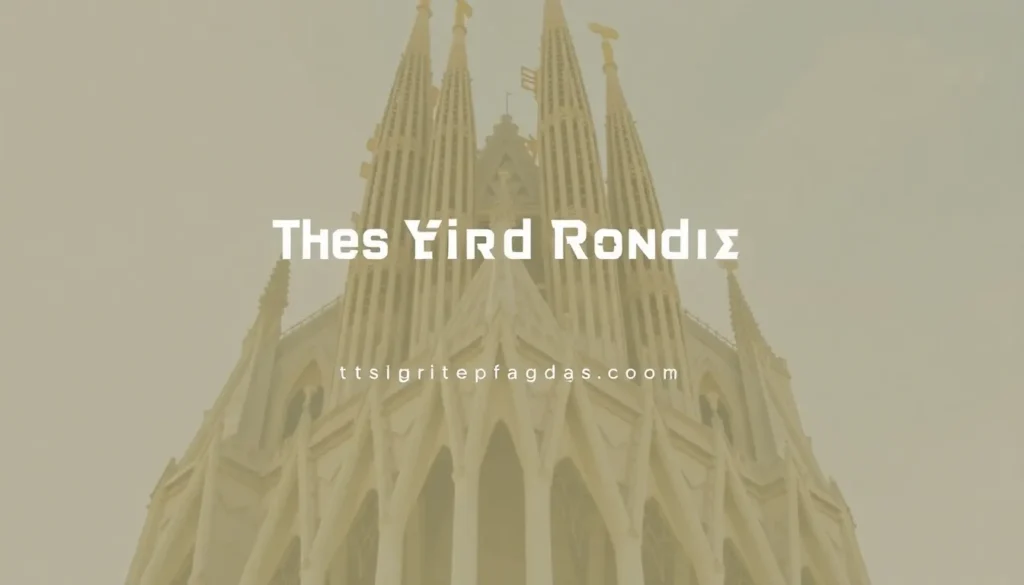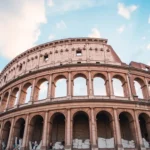Visit the Sagrada Familia in Barcelona: Tips and Information

Visiting the Sagrada Familia is not just about seeing a building; it's about immersing yourself in a world of art, history, and architectural wonder. As one of the most iconic landmarks in Barcelona, this basilica designed by the genius Antoni Gaudí is a must-see for anyone traversing the streets of the Catalan capital. In this guide, we’ll delve deep into everything you need to know to make your visit truly memorable.
Every glance at the Sagrada Familia is like the first time you laid eyes on it—its grandeur and intricate details seem to evoke new emotions with each visit. If you're wondering what awaits you inside this masterpiece, read on for a comprehensive overview of what to expect when visiting the Sagrada Familia.
A brief history of the Sagrada Familia
While many can recognize the unique silhouette of the Sagrada Familia, few are familiar with its rich and storied history. Its inception can be traced back to the vision of a Barcelona bookseller, Josep Maria Bocabella, who aimed to create a temple in honor of the Holy Family. In the late 19th century, he founded a society to raise funds for this ambitious project and eventually purchased the land for a staggering 172,000 pesetas.
Construction began in 1882 under the architect Francisco de Paula del Villar, but a year later, Antoni Gaudí took over the project. At just 31 years old, Gaudí would dedicate his life to this work, which would ultimately become a defining symbol of Barcelona and a paradigm of Modernist architecture. His revolutionary techniques, including the use of catenary arches, would forever influence architectural practices worldwide.
Gaudí remained at the helm until 1926, when he tragically lost his life after being struck by a tram. By then, he had completed only the crypt, the apse, and part of the Nativity Facade. The construction continued, albeit with setbacks, including a devastating fire during the Spanish Civil War in 1936 that destroyed many of Gaudí's original plans and models. Despite this, a portion of his designs was salvaged, allowing the project to move forward, albeit slower than anticipated.
Remarkably, nearly a century after Gaudí's death, construction of the Sagrada Familia is still ongoing, making it the oldest active construction site in the world. The ambitious goal is to complete the basilica by 2026, marking the centenary of Gaudí's passing. If all goes as planned, this iconic building will become the tallest church in the world.
Types of tickets to the Sagrada Familia
As one of the top attractions in Barcelona, it's essential to purchase your tickets in advance. The official website offers several ticket options:
- Self-guided Visit: €26. This basic ticket grants access to the basilica’s two facades and interior but does not include a guided tour or tower ascent. You may use the official app as an audio guide.
- Self-guided Visit with Tower Access: €36. In addition to the basic ticket, this option allows you to ascend one of the towers, with the selection made during booking.
- Guided Tour: €30. A 45-minute guided tour available in multiple languages, after which you can explore the temple at your own pace.
- Guided Tour with Tower Access: €40. This comprehensive option is recommended for those seeking a full experience without budget constraints.
For a smoother experience, consider downloading the official app, which provides valuable information and an audio guide.
Discounts and Free Entry Options
While the prices mentioned are standard, certain discounts may apply to specific groups:
- Children under 11: Free entry.
- Students and individuals under 30: €2 discount.
- Holders of a Carnet Jove: 50% discount.
- Seniors: 20-25% discount.
- Unemployed residents: Free entry on Wednesdays from 9:00 to 12:00.
- Large or single-parent families: 50% discount.
- People with disabilities and their companions: Free entry for self-guided visits and significant discounts on other tickets.
Some discounts need to be selected during the online reservation process. If your discount does not appear, you can request it via email at descomptes@ext.sagradafamilia.org.
Exploring the Sagrada Familia: What to See
Visiting the Sagrada Familia is a feast for the eyes, showcasing an array of elements and symbols. Here are some highlights:
The Nativity Facade
This façade, facing east, symbolizes the beginning of life and features intricate biblical scenes related to the Nativity. Gaudí completed this section during his lifetime, and its naturalistic details reflect his admiration for nature as God's creation.
The Passion Facade
On the opposite side, the Passion Facade signifies death and is characterized by its austere design. It embodies the drama of the crucifixion, with sculptures arranged to echo the stations of the cross.
The Glory Facade
Though still under construction, the Glory Facade will be the largest and most monumental part of the basilica. It will feature seven columns representing the seven gifts of the Holy Spirit, decorated with symbols of the seven deadly sins and virtues.
The Towers
Upon completion, the Sagrada Familia will boast a total of 18 towers, each representing various figures from Christianity:
- 12 dedicated to the apostles.
- 4 to the evangelists, surrounding the Tower of Jesus.
- The Tower of Jesus will reach 172.5 meters, making it the highest point of the basilica.
- The Tower of the Virgin Mary will stand at 127 meters, topped with a star that lights up at night.
Interior Wonders
Stepping inside the Sagrada Familia is akin to entering a magical forest of stone. The vibrant colors of the stained glass windows create a kaleidoscope of light, transforming the atmosphere throughout the day. The interior is defined by its powerful columns, built from various materials, supporting the structure while offering a visual feast.
The Main Altar, suspended in mid-air by a baldaquin, features a striking depiction of the Crucifixion, capturing the realism of Christ's form.
Getting to the Sagrada Familia
Located in the Eixample district, the Sagrada Familia is easily accessible via public transport:
- Metro: Lines L2 (purple) and L5 (blue), stop at "Sagrada Familia."
- Buses: Routes 19, 33, 34, D50, H10, V21.
- Tourist Bus: Stops directly in front of the Sagrada Familia. Tickets can be purchased here.
Opening Hours
The opening times vary depending on the season:
- November to February: Monday to Saturday, 9:00 AM - 6:00 PM; Sundays, 10:30 AM - 6:00 PM.
- March and October: Monday to Saturday, 9:00 AM - 7:00 PM; Sundays, 10:30 AM - 7:00 PM.
- April to September: Monday to Saturday, 9:00 AM - 8:00 PM; Sundays, 10:30 AM - 8:00 PM.
- Special Dates: On December 25-26, January 1 and 6, the opening hours are from 9:00 AM - 2:00 PM.
Tips for Visiting the Sagrada Familia
Here are some essential tips to enhance your experience:
- Entry is through Calle Marina; expect a security check before entering.
- Dress appropriately; this is a religious site, so avoid beach attire and headwear.
- Leave larger bags at designated lockers if visiting the towers.
- The ascent to the towers is by elevator; the descent is via a narrow spiral staircase.
- After your visit, stroll down Avenida Gaudí to the stunning Hospital de Sant Pau, another modernist gem.
- Check the weather forecast; sunny days enhance the experience of the stained-glass windows.
With these insights and tips, your visit to the Sagrada Familia will be not just a sightseeing stop, but a profound journey through the intersection of faith and art. Prepare to be captivated by one of the most extraordinary architectural feats in the world!




Deja una respuesta